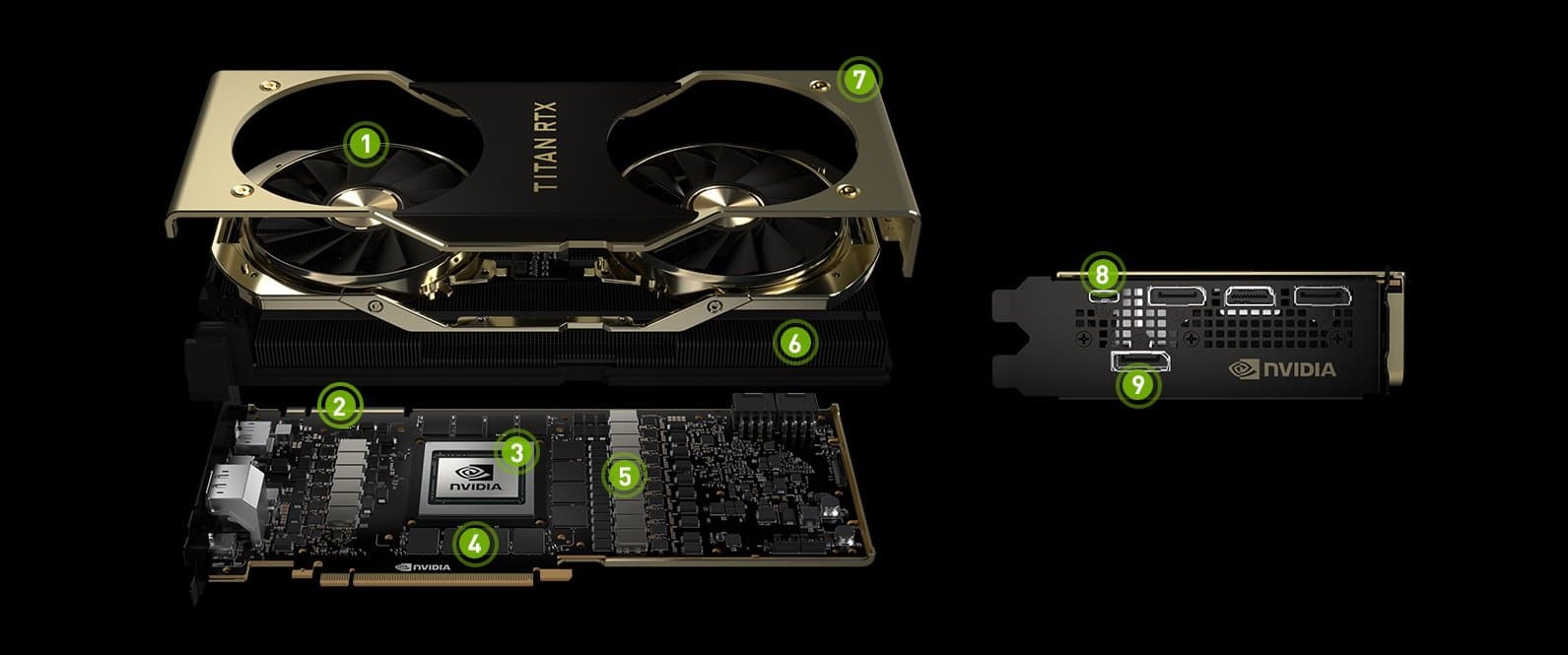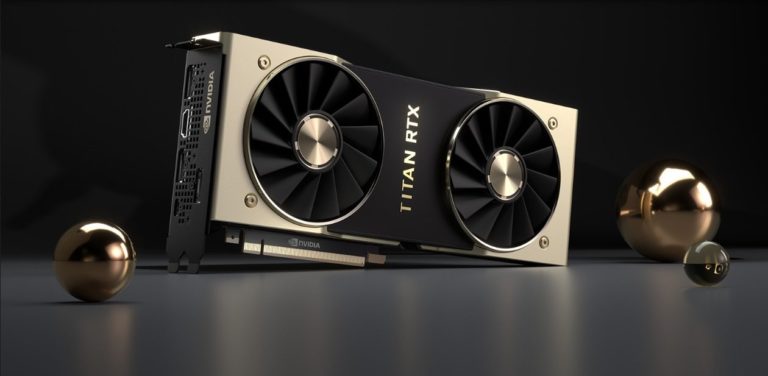Nvidia has announced the latest top model in the RTX line. RTX Titan unlocks the RTX 2080 Ti as Nvidia’s fastest graphics card. The specifications are very similar to the Quadro RTX 6000, the business variant for workstations.
Earlier this year, Nvidia launched three new graphics cards under the RTX flag. The RTX 2080 Ti, RTX 2080 and RTX 2070 focus on real-time ray tracing. The technique ensures that light is displayed realistically in a graphical scene. See the difference between a scene with and without ray tracing.
Now Nvidia adds the RTX Titan to the range. The superlative offers many similarities with the Quadro RTX 6000, the professional version with the same Turing architecture. Both share identical 4,608 CUDA cores, 576 Tensor cores and 24GB of GDDR6 memory.
RTX Titan
The Nvidia RTX Titan thus has as many CUDA cores as the RTX 2080 Ti, but has 32 Tensor cores and 4 Turing RT cores extra on board. The latter provide the real-time ray tracing technology. Nvidia speaks of 11 GigaRays per second. The RTX Titan gets a 384-bit memory interface compared to 352-bit in the RTX 2080 Ti.
The GPU clock speed is the same as the RTX 2080 Ti: 1,350 MHz with a temporary boost to 1,770 MHz. The boost speed is 8 percent higher than on the RTX 2080 Ti. The video RAM has been doubled to 24 GB GDDR6.

Each Turing chip contains three separate processors: Turing SM (central GPU), RT Core (ray tracing) and Tensor Core (AI). Nvidia COE Huang announces that the Tensor Core will focus on AI to predict and generate screen pixels in any type of 3D scene. The AI section is as powerful as ten GTX 1080 Ti cards according to him.
Although Nvidia has the Quadro range for professional applications, it focuses RTX Titan on AI researchers and developers. NVLink (100GB/s) allows you to combine two RTX Titan cards.
The Nvidia RTX Titan will be available later this month from 2,699 euros.
Related: Nvidia wants to reinvent the workstation with real-time ray-tracing
This news article was automatically translated from Dutch to give Techzine.eu a head start. All news articles after September 1, 2019 are written in native English and NOT translated. All our background stories are written in native English as well. For more information read our launch article.